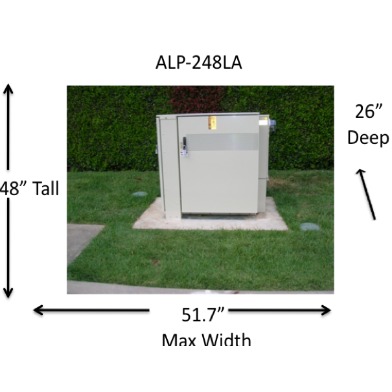 After months of delay, tomorrow SF’s Board of Supervisors may finally make a decision on whether to allow AT&T’s controversial plan to place 726 utility boxes on sidewalks across San Francisco to move forward.
After months of delay, tomorrow SF’s Board of Supervisors may finally make a decision on whether to allow AT&T’s controversial plan to place 726 utility boxes on sidewalks across San Francisco to move forward.
At tomorrow’s board meeting, supervisors are scheduled to decide if they should strike down a Planning Department ruling that the installation of the 4 foot tall boxes doesn’t need to go through a lengthy environmental review before proceeding. In February, the city gave the company a “categorical exemption” from the same type of environmental review that famously stymied the city’s bike plan for years.
The board already postponed this decision once in April and there is a chance that, on Tuesday, all they’ll do is punt it even further down the line.
“I want to find a way to bring the technology in while also respecting our streetscape,” said Supervisor Scott Wiener. “For a project of this significance I don’t think we should be rushing to a decision.”
For his part, Supervisor Sean Elsbernd, the plan’s biggest proponent on the board, shrugged off concerns about the boxes as simple NIMBY-ism.
“There are…tens of thousands of utility boxes out there right now,” he said. “Adding 726…does not strike me as unusual.” Elsbernd was the only board member to vote against postponing the vote on the Planning Department’s exemption in April.
There are approximately 1,000 such boxes currently located on San Francisco sidewalks.
The boxes are part of AT&T’s plan to challenge Comcast’s virtual monopoly providing San Francisco customers with cable service. AT&T says that the boxes are essential in the implementation of its “Lightspeed” internet/phone/cable service.
AT&T floated the city a similar plan when it attempted to roll out its virtually identical “U-verse” service in 2008. That plan was dropped after unexpectedly running into widespread opposition largely due to the communications giant’s nearly nonexistent efforts at community outreach.
“We have nothing against the technology. We just don’t want that delivery system,” said David Crommie, president of the Cole Valley Improvement Association–one of the neighborhood groups that united to block AT&T’s plan three years ago. “It’s 19th century packaging for 21st century technology.”
This time, AT&T is being much more deliberate in how it sells the plan to San Franciscans. The company has gone on an unprecedented charm offensive wooing skeptical citizens by meeting individually with over 80 neighborhood, merchant and community groups.
The main conflict isn’t about if AT&T should be allowed to roll out its service; there’s little opposition to injecting some much needed competition into the city’s lackluster market for cable and internet service providers.
Rather, the question is exactly where these boxes should be located. Groups like San Francisco Beautiful want to move the boxes underground where they won’t impede the flow of sidewalk traffic, collect graffiti or disrupt the character of the neighborhoods in which they’re placed.
In 2005, Department of Public Works chief Ed Lee (what ever happened to that guy?) instituted a policy dictating that this type of equipment only be placed on city streets when locating it elsewhere proves technically or economically infeasible, which AT&T attests is precisely the case.
The company insists that if the boxes were to go underground, each would need to be installed inside a 10-square foot concrete room and still require attendant above-ground equipment. Not only that, argues the telecom giant, but the construction work required to place the boxes underground would be even more of an inconvenience and eyesore than the boxes themselves.
While much of the hay being made about the boxes is undoubtedly genuine, some of the nationwide opposition to their placement was drummed up by AT&T’s primary competitor. Comcast ran a series of ads in Illinois opposing AT&T’s boxes on neighborhood beautification grounds. AT&T later sued Comcast over what they called a “false, deceptive and disparaging advertising campaign.”
Interestingly, AT&T hasn’t run into opposition everywhere it has attempted to put in the boxes. The company recently installed approximately 4,000 boxes on the streets of Chicago without any formal protest.
Want more news, sent to your inbox every day? Then how about subscribing to our email newsletter? Here’s why we think you should. Come on, give it a try.









